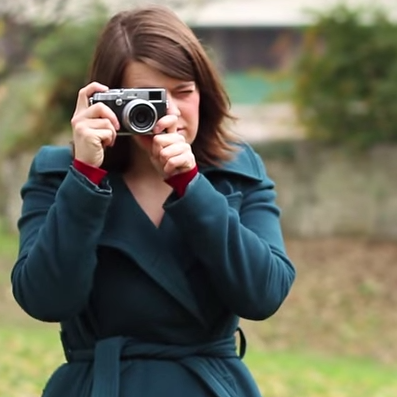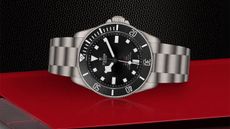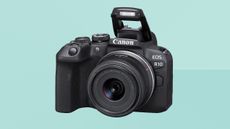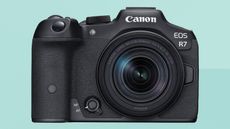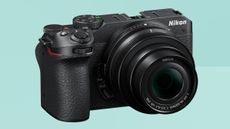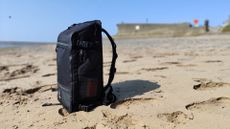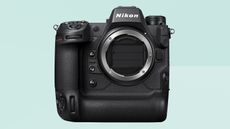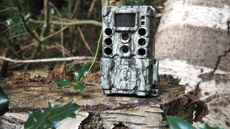We’re now a couple of years into Nikon’s Z system, with the newest model, the Z5, being an “entry-level” full-frame model designed to compete with the likes of the Canon EOS RP. It follows on from the original Z7 and Z6 cameras, sitting directly underneath them to give those with a smaller budget, or less advanced needs, a model to own which gets them into the system.
The “entry-level” full-frame market is a pretty busy one. Not only do you have a fight on your hands from the likes of Sony and Canon and their full-frame offerings, you also have to convince people that they don’t need an APS-C or Four Thirds sensor instead.
It uses the same mount as the other Z cameras, but with a new retractable kit lens to create a smaller overall body - so it’s also ideal as a travel camera or backup model for existing Z users.
Naturally, however, there are some compromises to be made for the lower price point. There’s a couple of design differences, but also things like a slower frame rate (4.5fps), and cropped 4K video recording. Whether these compromises represent a problem to you depend on the type of photographer you are - we’ll explore these specifications in more detail further along in the review.
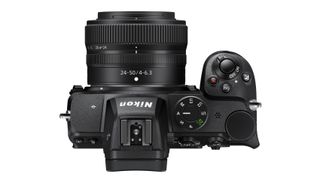
Nikon Z5 Review: Design and Handling
Nikon has followed the same sort of design that is has used for the existing Nikon Z6 and Nikon Z7 cameras (and actually, the Z50, too).
It is more or less the same size as the Z6/Z7 body, which means that it features a deep enough grip to give good purchase, which is complemented by a textured thumb rest on the back of the camera. A dual control dial setup has been brought over so you can make key changes to settings such as aperture and shutter speed (depending on the shooting mode you’re in) by using your thumb and forefinger. One sacrifice which has been made is to lose the top-plate LCD screen, while the mode dial has been moved over to the right hand side of the camera’s top.
Although the Z5 is an entry-level camera, Nikon hasn’t littered the mode dial with a set of beginner-friendly but not-very-often used settings. Instead, we have fully automatic, the usual P/A/S/M modes, plus three slots for setting your own user-defined groups of settings, which is very helpful if you often shoot in one particular kind of scenario (such as low light).
The button arrangement on the back of the camera is identical to the Z6/Z7, with excellent features such as a joystick which you can use to change the AF point - it falls naturally under your thumb when holding the camera up to your eye, and an “i” button to give you access to a quick menu which features many of your often-changed settings.
While the viewfinder is the same as found on the Z6/Z7, the rear screen has a much lower resolution. Unless you’re using the two cameras side-by-side it’s hardly going to be something you’ll notice in every day shooting, and the better news is that it’s just as responsive as it’s more expensive brother when you’re using its touch-sensitivity. Unlike the Z50’s screen, the Z5’s tilting mechanism doesn’t allow it to face forwards, making it less useful for selfies and video shooting, but again, this is not really a camera aimed at that type of user.
One of the big criticisms levied at the Nikon Z6, and in particular the more pro-oriented Z7 camera, is the single XQD card slot. As this model is aimed more squarely at the enthusiast audience, it takes SD cards, but interestingly it has double slots - something which is easier to do with the much smaller form factor of an SD card. Both of the card slots are UHS-II compatible, too.
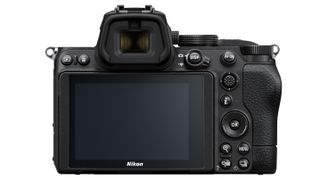
Nikon Z5 Review: Features
At the heart of the Z5 is a new 24.3 megapixel CMOS sensor. It’s similar in resolution to the Z6’s 24.5 megapixel device, but importantly, it is not backlit which makes it cheaper to include at this price point. There are some other features that have been directly brought across, however, including the same 273-point autofocus system and the same viewfinder.
That viewfinder is a 3.69-million dot device, which considering this is an entry-level/cheaper model is reasonably surprising to see. Where Nikon has made a cutback is to the screen, which at 1.1-million dots is closer to the Z50’s screen than the 2.1-million dots of the Z6/Z7. It’s still a touch-sensitive, tilting number though.
Nikon uses the same Z mount as found across its range, and for this model has introduced a new “kit” lens, which offers 24-50mm in focal length and retracts to make a very compact and neat overall offering. Of course, you can use any of the other Nikon Z lenses, along with “F mount” DSLR lenses with an optional FTZ adapter.
One of the big compromises for the Z5 is the slow frame rate, which is a mere 4.5fps, something which in 2020 seems particularly sluggish. That makes the Z5 less appealing to those who like to shoot sports and action - or indeed anything which moves. Better news is that 5-axis in-body stabilisation is still included, though.
Further good news is the same AF system as found in the Z6, which gives you good coverage across the frame, and also includes features such as Eye AF, which is designed to work on both humans and animals.
Another big cutback is to 4K video recording, which suffers from a crop. Even when using a 24mm lens, that gives you an equivalent focal length of around 40mm, making framing certain subjects fairly difficult. A crop like this makes the Z5 far less appealing to videographers and vloggers, and suggests that Nikon’s main audience for the Z5 is stills photographers - again how much this bothers you very much depends on the type of things you want to use the camera for.
In an attempt to appeal to travel photographers, and those looking for a small and neat compact, you can buy the Z5 with a new “kit lens”, which gives you a 24-50mm focal length. It can be folded down when not in use to make it even smaller, making the overall package very neat indeed.
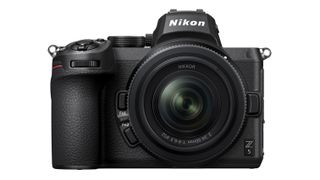
Nikon Z5 Review: Performance
Although the Z5 uses a different sensor from both the Z6 and the Z7, we had every confidence that it would be capable of delivering excellent images, and happily that has proven to be the case in the vast majority of situations. For those who like to shoot consistently in low light, it’s worth looking at the more advanced Z6, as the lack of a back-illuminated sensor seems to have an impact when the lighting conditions aren’t quite as perfect as you’d like.
At very high ISOs, there’s quite a bit of image smoothing, so it’s worth keeping your shots to ISO 12800 and below if you can - something which is helped along by Nikon keeping the 5-axis image stabilisation feature in this camera.
In good lighting, the shots produced by this camera have a satisfying vibrance to them, with accurate colours that stay on the right side of realistic. The overall impression of detail at lower ISOs is also very good. The 24-50mm kit lens produces good images and it’s great to have such a neat and compact walk around lens, but if you want to really get the best from the Z5, other lenses produce even better results. We’ve been using the 35mm f/1.8 and 50mm f/1.8 prime lens with it to get some really lovely shots. Alternatively, the 24-70mm f/4 lens is also worthy of consideration if you can live with a bigger overall package, as you get a bit of extra reach, and a wider maximum aperture throughout the range.
When it comes to autofocusing, again, there was no real great surprises here as it’s the same focusing system found in the Z6. That means you get a good amount of coverage across the scene, and on the whole it locks on to the target quickly and easily. The Z5 also comes pre-loaded with face and eye detection, which works when using “Auto Area AF”. This proved effective for spotting human eyes, but it had trouble identifying my dog’s eyes - she is a black dog, with brown eyes, so this is arguably a challenging prospect, but it’s one which Sony cameras with the same functionality never have any problem doing.
Those who like to shoot sports, action and wildlife photography are probably not best served by the Z5. It has a relatively pedestrian 4.5fps maximum frame rate. While that means it can keep up with very predictably moving subjects to a degree, it’s very easy to miss the opportune moment. It’s not too bad if moving subjects is something you shoot very rarely, but if you’re likely to be disappointed regularly by this setting, look elsewhere - such as the Z6, if you want to stick with Nikon.
Nikon Z5 Review: Image Samples
Nikon Z5 Review: Verdict
There’s plenty to like about the Nikon Z5. It’s impressively small for a full-frame camera, and especially if you combine it with the new 24-50mm kit lens, then you’ve got a great travel or everyday camera in the making.
It has a good set of features, with a well-performing sensor, nicely functioning touch-sensitive tilt-screen and a fantastic viewfinder that you might not expect to find on an entry-level camera.
There are some compromises to be made though. It has a disappointing frame rate (4.5fps), while having a crop applied to 4K will also be off-putting to videographers and vloggers. The lower resolution rear screen and the slightly inferior sensor are all things to think about too.
It’s especially important to think about those things when you put it in the context of its current asking price. As it stands, you can get a Z6 with the 24-70mm for only £300 more than the Z5 with the 24-50mm. For that extra outlay, you get an overall better-performing camera and lens combination, which is more versatile for a range of situations. We expect there to be a bigger diversion in price difference as the Z5 gets older, but for now, it’s really worth thinking about whether you want to spend just that little bit more.
Overall, however, the Nikon Z5 has a lot to offer and it’s a great little package for anyone looking to get their first full-frame camera. Nikon has managed to shrink it down even further without losing the great handling and some of the series’ top-end specifications.
- Best action camera
- Best travel camera
- These are the best camera bags
- Best instant camera
- Best camera for kids
- Best entry-level camera

